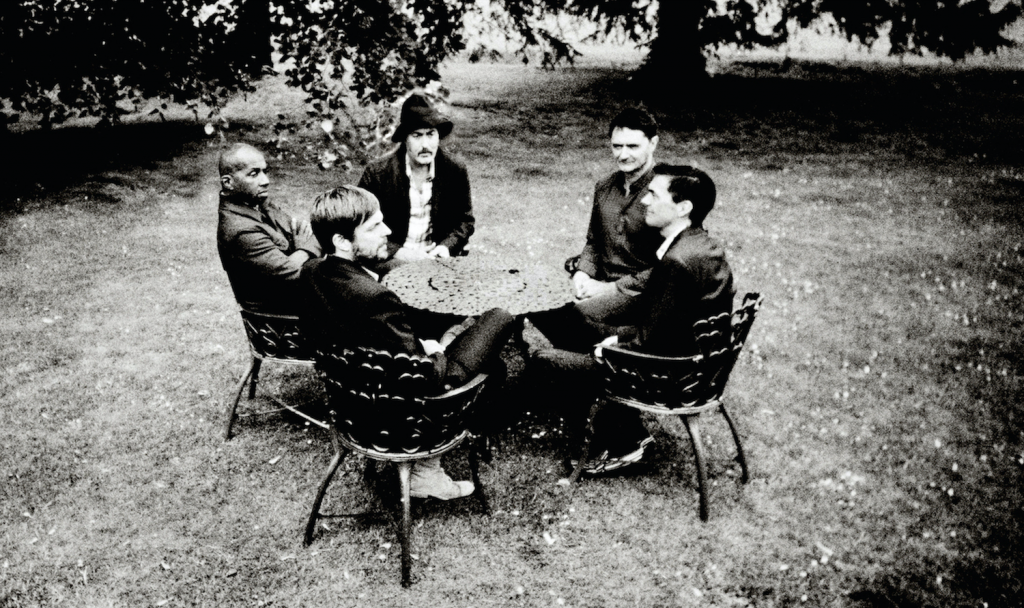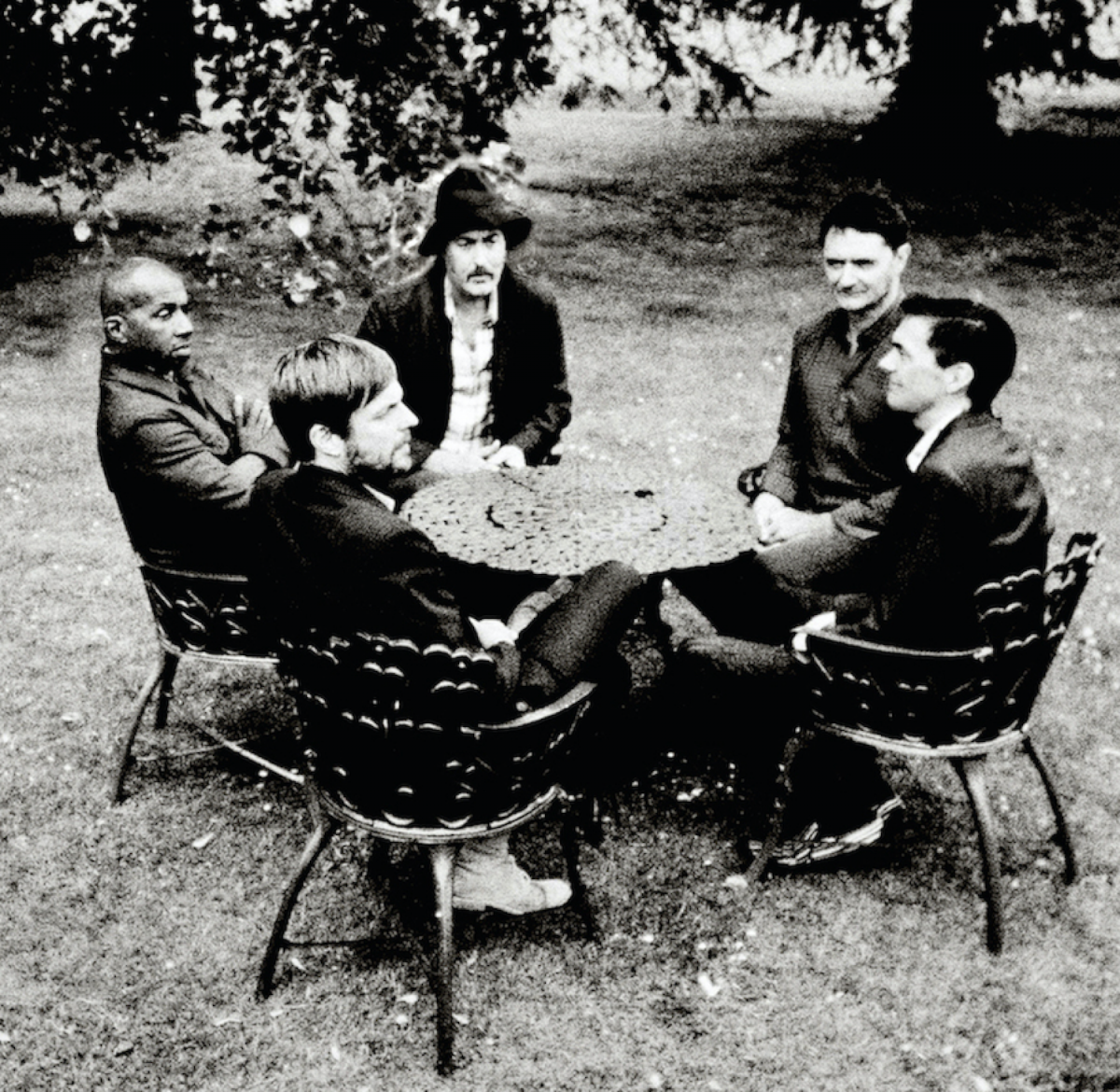
Tindersticks learn to embrace the “cinematic” tag that has long plagued them
For a band that is all about minimalist exactitude and patient restraint, Tindersticks’ discography is particularly cluttered. Since starting in London a quarter-century ago, Tindersticks has released numerous live albums, compilations and soundtracks (their ongoing collaboration with French filmmaker Claire Denis has yielded six scores, with a seventh in the works). Their last studio album, 2013’s Across Six Leap Years, was an excellent set of new versions of old material.
So, how does the new The Waiting Room tabulate in the Tindersticks oeuvre?
“I suppose it’s the 10th time we’ve written a bunch of songs and gradually formed them into an album, and so it’s not taking bits from here and there or being a live album,” says singer and primary songwriter Stuart Staples, he of the deep, thoughtful and soulful voice that anchors Tindersticks’ noir atmosphere. “Fundamentally, it’s an album, even though it has a lot of other things attached to it. It’s what we’ve devoted our last 18 months or so to; it has a beginning, a middle and an end; it’s 46 minutes long. It has all the attributes of the classic album format, and that’s something that’s very deep inside us.”
By that definition, Tindersticks released six albums between 1993 and 2003. After 2003’s Waiting For The Moon, the band took a break and underwent some personnel changes.
“Since 2007, when we started to write together again, we made three albums really quickly, or what felt like really quickly in succession: The Hungry Saw, Falling Down A Mountain and The Something Rain,” says Staples. “Looking back, it was a period of rebuilding. We didn’t have our original lineup; we had new people coming to what we did, which was really exciting, but it’s not like you automatically fit together. You may be able to play music together, but at a deeper level, it takes time to define that space between you. With The Something Rain, it felt like we kind of arrived somewhere. There wasn’t that automatic feeling that we had to do something now, because there’s all this space in front of us.”
The band did soundtracks, museum installations and other projects before beginning work on what would become The Waiting Room. Staples says he tends to ruminate on song ideas for a long time—sometimes for decades—before they find their way to come to life. And he is now more likely to bring the ideas to the band in rudimentary form. “They’re all such better musicians than I am, and if I can provide something that sets something in motion, that’s my role, really,” he says. “It’s to light some kind of torch paper to get a group of people to believe in an idea.”
The Waiting Room is full of ruminative, patient songs that sometimes blossom with brass or strings. The arrangements come from a process of attrition: the band starts with lots of ideas, by what Staples calls “making a racket,” and then pares them to their essence.
“Tindersticks is five people, and each person has a voice,” he says. “In each song, I want to hear each voice, and I don’t want to have it crowded out with ideas within a moment. I suppose it’s minimalist, but it has more to do with being concise. It definitely has to do with subtraction from the barrage of ideas we start with.”
Not everything on The Waiting Room is restrained: “We Are Dreamers!” roils with tension and frustration. Staples drafted Savages’ Jehnny Beth, who he met when they were both singing in a tribute to the music of David Lynch, to add backing vocals.
“I got to see her, but see her in a different context from being in Savages,” he says. “I was working on ‘Dreamers’ at the time, and I just thought, ‘Wow, she is the voice for this.’ ‘Dreamers’ is not a duet to me. I asked her to be a fellow dissenter, somebody else to shout this thing, a refusal to accept a certain kind of reality. [Laughs] She sang it twice, and that’s the second take in its complete entirety. It was exciting. It was just the color the song needed.”
Given all their work with film scores—and each song on The Waiting Room itself has a corresponding short film—it’s no surprise that the band is often described as “cinematic,” a label that Staples has finally come to embrace.
“There must be something in it,” he says. “There must be something in being called ‘melancholic,’ too, if we’re always called that. For me and some of us, it’s kind of a natural state. [Laughs] I don’t think you can make it up. We used to fight it and say, ‘No, that doesn’t really apply to us.’ But when it comes down to making music about the emotions that make us make music, there’s no escaping it. With the word ‘cinematic,’ as much as I dislike it, I’ve always thought it’s about leaving space, and people have to step into that space themselves. They have to do … not work themselves, but have to be open to what the music brings out in them as listeners. I think when we work with film, having that kind of natural space within our music, it allows images to breathe without trying too hard.”
Space is everything to Tindersticks—space between records, between beats, between instruments, between words.
“I think space in music is so important, and edges,” says Staples. “When I hear music that has the edges taken away and the spaces squashed out of it, I think there’s no room for me. It’s all surface. I think to feel something in music, you have to get beyond the surface.”
—Steve Klinge







